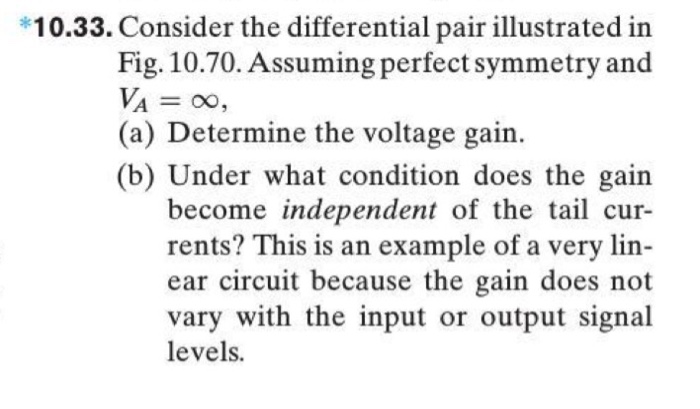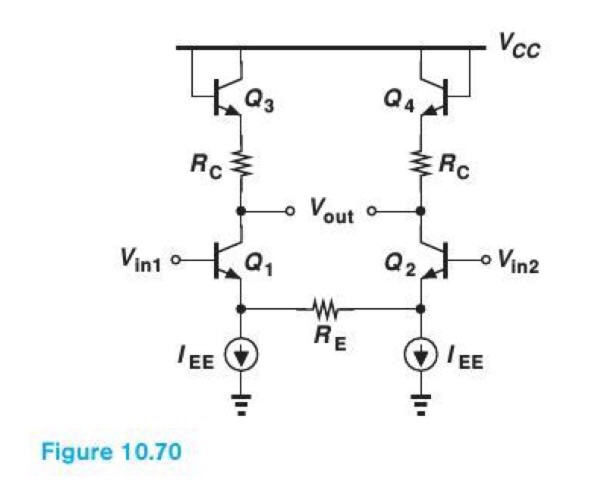10.33. Consider the differential pair illustrated in Fig. 10.70. Assuming perfect symmetry and VA = ∞, (a) Determine the voltage gain. (b) Under what condition does the gain become independent of the tail currents? This is an example of a very linear circuit because the gain does not vary with the input or output signal levels. Figure 10.70

